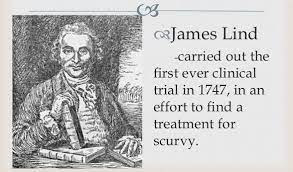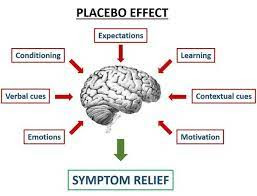The placebo effect is a beneficial health outcome resulting from a person's anticipation that an intervention will help. Placebo is Latin for I shall please. Two related examples are self-fulfilling prophecy and the Pygmalion Effect.
The placebo response rate could be as high as from 35% to 40%, according to the Journal of American Medical Association. Medical News Today has reported that this effect could range from 16% to 71.4%, depending on the ailment.
- A more caring approach can enhance the effect. In the case of Parkinson's disease, where 16% showed significant improvements, sometimes lasting for 6 months, the reason was due to dopamine release in the striatum.
- The placebo effect is at the interface of biology and psychology.
- There is now more information on why acupuncture and reiki do help some people.
- Doctors are more and more being taught that if science cannot separate a medicine from a placebo, shouldn't they use this information to some advantage?
- Your mind can be a powerful healing tool when given the chance.
- Placebos will make you feel better, but will not cure you.
- Effective for pain management, stress-related insomnia and cancer treatment side effects like fatigue and nausea.
- They won't work to lower your cholesterol or shrink a tumor.
In testing a medical therapy, whether it be a pill or treatment (like ultrasonics), one group takes the pill in consideration, but others will instead be given a placebo pill or no real ultrasonic, just some noise. This process can check the real effectiveness of the pill. Even the administering doctor many times does not know the details. Something called double-blind placebo control trials seem now to be the standard. Government regulatory agencies now require the use of the placebo effect, as immoral as some might think it is. About the ethics, in 2002, the World Medical Association established conditions when the placebo effect can be utilized.
There is a second method that uses natural history groups:
- Active drug.
- Placebo drug.
- Natural history group who receives no treatment of any kind.
The expectation is that the placebo group will fall somewhere between an "effective" drug and one where no drug is given.
Some history, in 1747, James Lind, the ship's doctor on the HMS Salisbury conducted the first clinical trial when he investigated the efficacy of citrus fruit to prevent scurvy. The placebo ranged from vinegar to weak sulfuric acid to cider. The other half were given two oranges and one lemon each day. Only the citrus acid group managed to avoid scurvy.
- Remember that time can heal, whether you apply medication, placebo or, as in this case, nothing.
- If a patient in treatment sees any sign of getting better, it tends to ignore the negative and focus on the positive. Like the Hawthorn Effect, we change our behavior when we know we are being watched, in this example towards optimism.
- Most of us have personally experienced being administered pills or shots, where our health improved. When we are given a placebo, we hope to expect the same cure.
- Studies show that post-operative patients whose painkillers are distributed by a hidden robot pump need TWICE as much drug as when they see a nurse applying the drug.
- Can't imagine this actually happening, but research suggests that fake surgeries, where the surgeon makes some incision, not doing anything else, is more effective than placebo pills.
- There is a term called the NOCEBO effect where negative expectations make people feel worse. so your state of mind makes a big difference. A good case for optimism.
- Originally, it was thought that our brain was at the center of bringing about the placebo effect, for doctors have fooled the brain by changing from real medication to placebos, and the pain reduction continued, even though there was no chemically-added reason for such a reaction. In essence, our brain learned to associate taking a pill with relief, and started to produce the chemicals to kick-start that relief.
- We more and more learn that our body organs can act independently of the brain, for in one test, participants were given a sweet drink along with a pill that contained an immune suppressant drug for a few days. Without notice, the drug was swapped with a placebo, and our body still showed a decreased immune response. The decreased production of interleukin in cells continued, with no apparent influence of the brain.
- Not only pills, but when someone sees people get relief from a device, such as during an electroshock experiment, a similar placebo response occurs when this viewer is hooked up to the machine. The power of positive thinking.
- Acupuncture? Depends on who is doing the administering.
- In an experiment with 260 participants, the group that interacted with someone who empathized with the patient got the best results for irritable bowel syndrome.
- Better than the group where that person showed no warmth, and also with the third that still awaited attention.
- In short, placebos work best for symptoms at the murky boundary between the physical and psychological: helpful for pain, nausea, asthma and phobias from ailments like smoking, dementia, depression, obesity hypertension, insomnia and anxiety.
- For example, asthma patients were sorted into four groups: inhaler with albuterol, inhaler with a placebo, something called sham acupuncture in that there was no actual body intrusion and nothing. Here were the results:
In short, this experiment seemed to indicate that those symptoms modulated by the mind work best for placebos and non-traditional remedies like acupuncture.
In any case, there is ample evidence that placebos can result in release of opioids and other endomorphins (chemicals that reduce pain) in the brain. In addition:
- The periaqueductal gray matter, a region of the brain key for pain management, shows increased activity under the effect of a placebo.
- Patients with Alzheimer's disease start to show a diminished placebo response due to degradation of their frontal lobes.
- Deception works, but if a doctor actually tells a patient all he is providing is a placebo pill, would this work? Ted Kuptchuk of Harvard did for irritable bowel syndrome and lower back pain. Symptoms actually got better. The explanation is that we all have deep-seated conditioned memory, and just your doctor providing this identified placebo can have a positive effect.
Will placebo therapy, deceptively or not, be integrated into the medical profession? There seems to be more of this and Eastern medicine (which is not really scientific) entering standard practices. Kuptchuk says this would change the mostly art of medicine into the developing science of medicine. Just the opposite of the traditional attitude today.
Well heck, if placebos work for medicine, what about in sports? Here is an article that suggests sprint performance be enhanced.
Finally, the placebo effect only works if you are convinced it will work. There are devices sold today that probably only work because of the placebo effect. Are they ethical? Legal? They are in the realm of Eastern medicine and neuropathy, and also gaining in credence.
I found one fairly comprehensive 2019 study of 100 active duty and retired service men and women with chronic pain undergoing treatment at the Brooke Army Medical Center in Texas. Researchers compared three treatments: Tennant Biomodulator, traditional Chinese acupuncture and transcutaneous electrical nerve stimulation (TENS). They all showed a 16% pain reduction. There must have been some logic to the fact that the result was the same for all three. No placebo group was utilized. Too bad, for if they also saw a 16% improvement, that would have pinpointed the reason.
The report said that 126 million Americans (38%) suffer from chronic pain, leading to an annual loss of $635 billion to the U.S. economy. If a safer solution can be found, opioid problems can be reduced. So these non-traditional practices can play an important role in our daily life.
The report is rather comprehensive and should be read if you have an interest in this subject. In summary:
- All three interventions produced significant reductions in chronic pain over 6 weeks of treatment. The biomodulator was only used at the most basic setting.
- There was no effect on PTSD and depression symptoms.
- While the pain reduction was only 16%, whatever that means, there was a sense that they all should be considered by the general public, for they carry low risk, and are a heck a lot safer than opioid use.
- As the Tennant Biomodulator can be operated at home without medical supervision, it was recommended to be included in a larger scale test to explore the more advanced features. Interestingly enough, a placebo group was advised to be added to the next trial.
I'll end with a comedy routine. Someone from Maui...no, Mali....no, Malawi.
-




























Comments
Post a Comment